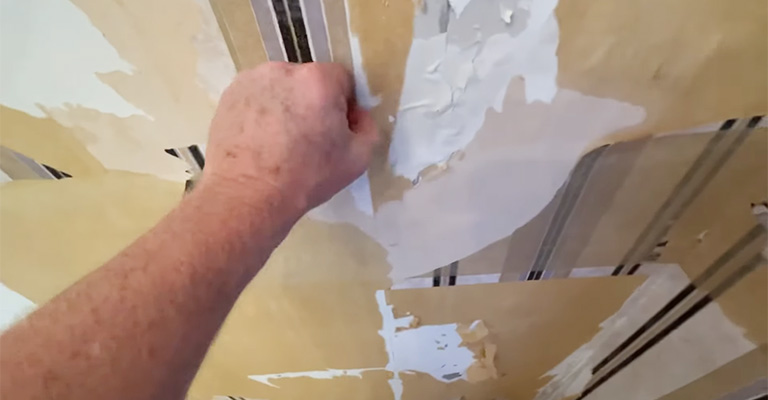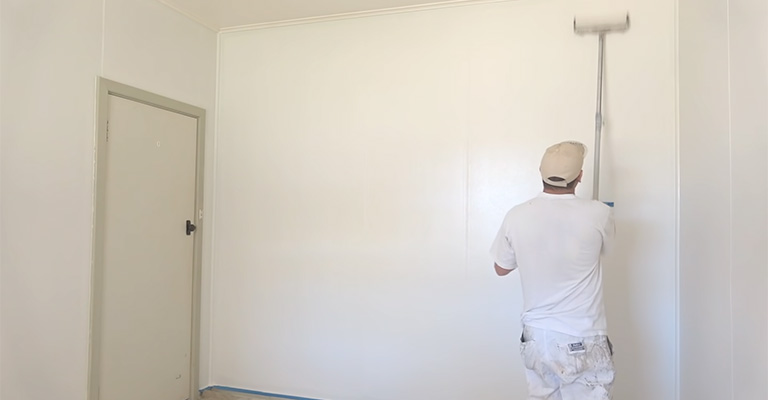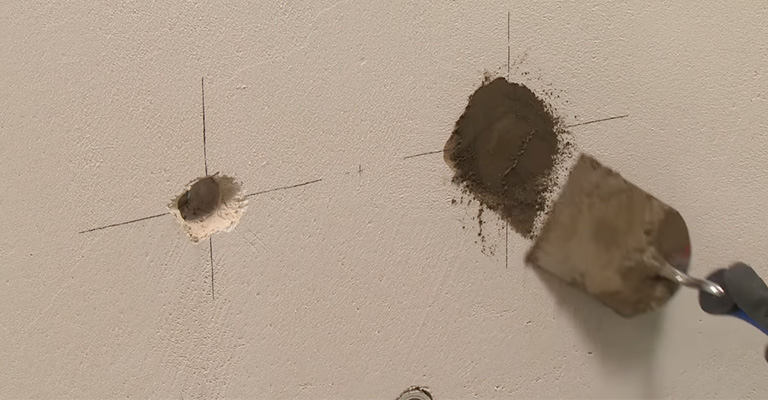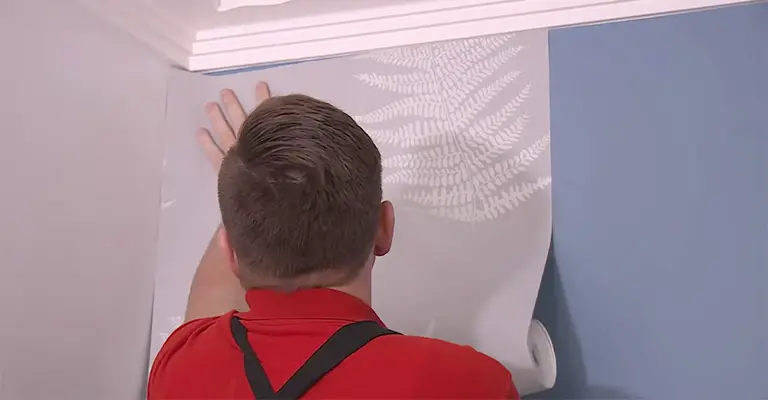Are you tired of looking at that unsightly wall in your home that’s been bothering you for months? Do you wish you could give your room a fresh new look without having to go through the hassle of a complete renovation?
Well, the solution to your problem could be as simple as wallpapering over that problem wall! Wallpapering over a problem wall can be a great way to cover up unsightly blemishes and give your room a fresh new look.
However, before you start the process, it’s important to properly prepare the wall and choose the right type of wallpaper for the job.
In this article, I’ll guide you through the process step-by-step and show you how to transform that problem wall into a stunning feature that you’ll be proud to show off to your friends and family. So, let’s get started and give your home the makeover it deserves!
Things To Consider Before Wallpapering Over A Problem Wall

When considering wallpapering over a problem wall, there are several important factors to consider:
Wall Condition
The first and most important factor to consider is the condition of the wall. If the wall is damaged, cracked, or has holes, it will need to be repaired before wallpapering.
Wall Type
Different types of walls require different types of wallpaper. For example, the wallpaper will not adhere well to a glossy surface, so it’s important to choose a wallpaper that is suitable for the type of wall you have.
Wall Preparation

Before wallpapering, the wall should be cleaned and primed to ensure that the wallpaper adheres properly.
Wallpaper Type
Not all wallpaper is created equal, and it’s important to choose a wallpaper that is suitable for your needs.
For example, if you’re looking to cover up a problem wall, you may want to choose a heavy-duty wallpaper that is more durable and can withstand more wear and tear.
Tools
Wallpapering is a time-consuming task that requires the right tools to complete. Make sure you have everything you need such as a wallpaper brush, a sharp blade, a wallpaper smoother, and a pasting table.
Measurement

Before you start, it is important to measure the wall and calculate how much wallpaper you will need to complete the job.
By considering these factors, you can ensure that your wallpapering project is a success and that your problem wall is transformed into a stunning feature.
How To Wallpaper Over A Problem Wall?
Hanging wallpaper on damaged and problematic drywall can be an effective way to cover up blemishes.
Before hanging wallpaper, make sure to fix any larger problems, as raised nail heads and holes can eventually lead to rips, tears, and punctures.
It is important to address these issues prior to wallpapering to ensure the wall will look great for years to come. Here are the steps you need to take to successfully wallpaper over a problem wall:
1. Prepare The Wall

Start by cleaning the wall with a mild detergent and water to remove any dirt or grime. Next, fill in any cracks, holes, or other imperfections with spackling paste and allow it to dry completely.
Sand the wall smooth and then apply a coat of primer to ensure the wallpaper adheres properly.
2. Measure The Wall
Measure the height and width of the wall to determine how much wallpaper you will need to complete the job.
Cut the wallpaper: Measure and cut the wallpaper to the appropriate size for your wall, allowing for an extra inch or two on each side to account for any mistakes or adjustments.
3. Apply The Paste

Follow the manufacturer’s instructions for mixing the wallpaper paste. Apply the paste to the back of the wallpaper using a wallpaper brush or roller, making sure to cover the entire surface evenly.
4. Hang The Wallpaper
Carefully align the wallpaper with the top of the wall and smooth it out with a wallpaper smoother. Use a sharp blade to trim off any excess wallpaper at the top and bottom of the wall.
5. Finish The Job
Repeat the process for each piece of wallpaper, making sure to match up the patterns or seams as you go.
Once the wallpaper is completely hung, smooth out any bubbles or wrinkles with a wallpaper smoother and trim off any excess at the edges with a sharp blade.
By following these steps, you can ensure that your wallpapering project is a success and that your problem wall is transformed into a stunning feature.
Frequently Asked Questions
1. Can I wallpaper over a textured wall?
It depends on the type of texture and the type of wallpaper you are using. Some textured walls may need to be smoothed out before wallpapering.
Others can be wallpapered over with a heavy-duty wallpaper that is designed for textured surfaces.
It’s best to consult with a professional to determine if wallpapering over your textured wall is a viable option.
2. Can I wallpaper over paint?
Yes, you can wallpaper over paint, but it’s important to make sure the paint is in good condition and properly primed.
If the paint is peeling or chipping, it should be removed or repaired before wallpapering. Also, the surface should be cleaned and primed so that the wallpaper adheres properly.
3. How do I remove wallpaper?
Removing wallpaper can be a labor-intensive task, but it can be done with the right tools and techniques. One method is to use a wallpaper steamer to soften the adhesive, allowing the wallpaper to be easily scraped off.
Another method is to use a scoring tool to create small perforations in the wallpaper, then apply a wallpaper-removal solution to dissolve the adhesive. A third method is to use a combination of hot water, fabric softener and a scraper.
4. Can I wallpaper over a previously wallpapered wall?
You can wallpaper over a previously wallpapered wall, but it’s important to make sure the previous wallpaper is in good condition and properly primed.
If the previous wallpaper is peeling or chipping, it should be removed or repaired before wallpapering. Also, the surface should be cleaned and primed so that the new wallpaper adheres properly.
5. Can I wallpaper over a wall with mold?
Wallpapering over a wall with mold is not recommended. The mold should be removed, and the cause addressed before wallpapering, as it can continue to grow and spread underneath the wallpaper. If the mold is severe, it may be necessary to replace the affected drywall.
Final Words
In conclusion, wallpapering over a problem wall can be a great way to give your room a fresh new look, but it’s important to properly prepare the wall and choose the right type of wallpaper for the job.
By following the steps outlined in this guide, and taking into account the frequently asked questions, you can ensure that your wallpapering project is a success.
However, if you are unsure about your skills or if the problem is severe, it is always recommended to consult with a professional to ensure that the job is done correctly and safely.






